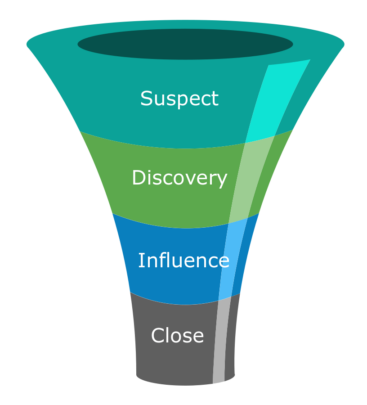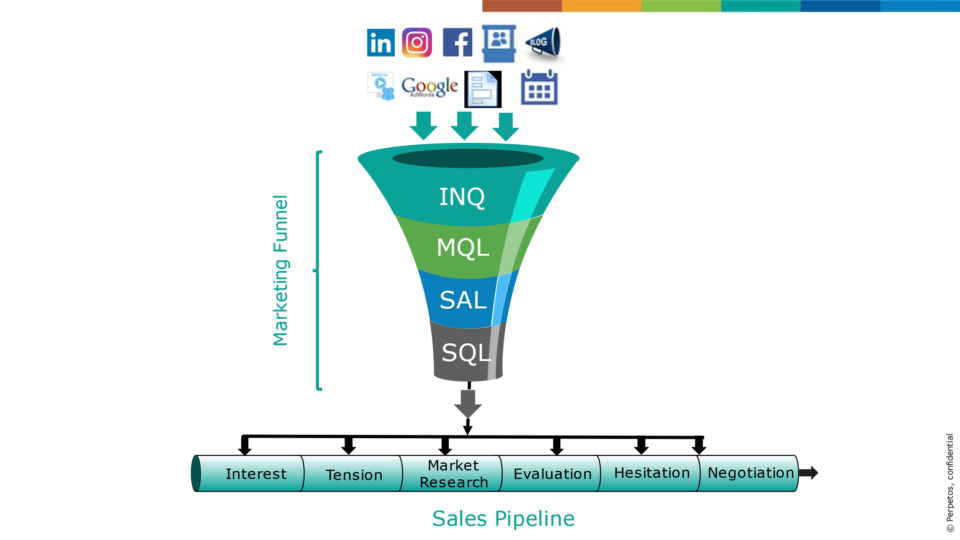Perpetos helped a global industry leader in premium label solutions to develop its customer portfolio and optimize it in a dynamic way. As a result, the organization was able to maximize its sales results.
The challenge: the right time and effort for every customer
The label solutions company had gone through an impressive growth in recent years. Unfortunately, this had gradually complicated the global organization of sales. Because of multiple acquisitions, sales were no longer organized in a uniform way.
The organization had always classified its customers based on past sales results. However, because of changing market conditions, the share of wallet of customers had become much more dynamic. This made it increasingly difficult for the sales organization to allocate the right amount of time and effort to the right accounts.
The label company also lacked understanding of its customers’ true potential and there was a big variety in the degree in which sales people followed up on their opportunities.
When contacting Perpetos, the sales team was looking to solve the following challenges:
- How to target the right customers
- How to spend the right amount of time with customers according to growth potential, without losing turnover from current big accounts
- How to assign the right customer portfolio to the right sales representative, based on sales skills
- How to make sure sales people apply the right mix of tactics to achieve their sales targets
- How to support sales in their skill development
The solution: dynamic account portfolio
Perpetos implemented a program to help sales develop their customer base and to dynamically optimize their customer portfolio. This would help the organization to maximize revenue per salesperson by spending the right amount of effort to the right accounts.
The label company was looking for a practical approach and implementation without extensive theoretical analysis. The goal was to achieve quick results and to stimulate motivation and readiness for change as much as possible. The organization also wanted to gradually improve its market visibility and identify the highest-potential growth areas by geography, market and solution.
Sales team scan
Perpetos started with a quick scan of the sales team. This was an important step towards making better use of the people in the team to realize the sales goals. The audit uncovered different sales profiles, as well as the team’s strengths and points of improvement. The results of the scan were translated into concrete action points.
Dynamic micro-segmentation
Next, customers were categorized based on their annual purchase amount and revenue of recent years. This resulted in four micro-segments based on share of wallet. For every customer segment, the team determined which activities were needed to maximize the share of wallet.
The team was asked to:
- Indicate the total addressable market: which portion of the label purchase was not interesting, because the organization’s solutions or price were not a fit?
- Determine the importance of a customer, based on their realistic potential within three years, on the condition that this customer receives the right amount of attention and service.
- Analyze the numbers for every sales representative and propose a good enough starting point for the next steps in the program.

Next, the customer base was divided into four different segments based on growth potential and on the required efforts to realize that potential. This micro-segmentation was dynamic, and enabled the team to make changes immediately visible to the rest of the organization.
The objective of the program was for the sales staff to spend their time on the growth opportunities with the highest chance of success. Support from marketing and customer service was also aligned with the modified approach, so that sales could focus fully on developing growth.
Optimization of sales activities
Based on the micro-segmentation, the individual and team-based sales activities were optimized. The optimization took three elements into consideration:
- Is the mix of customers correctly distributed among the salespeople based on their strengths and experience?
- Has the team set the right priorities to maximize results together, within available sales time?
- Are sales and marketing activities correctly aligned with growth potential, available production capacity and competitive advantages?
The result: clear path for transformation
The success of this transformation program
was the result of:
- The integration of the customer’s sales team and the Perpetos staff into one close-knit team, as a result of the Perpetos Customer-Centric program design
- A step-wise implementation targeting measurable impact
- Closing the gap between knowing and doing, and making it stick with each participant
- Close cooperation with sales management
- Extra individual mentoring and guidance for sales and their management
Do you also want to maximize your sales revenue? Get in touch



 Luc Vanheule
Luc Vanheule





 Pascal Persyn
Pascal Persyn
